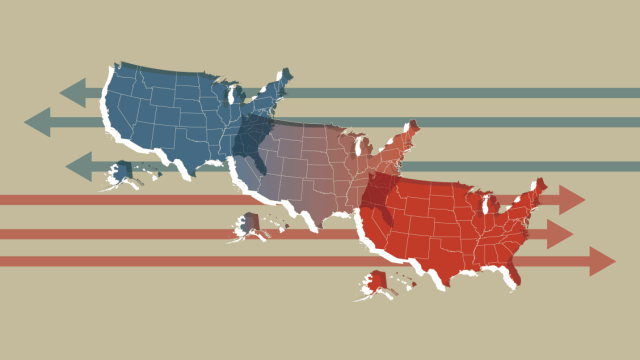
In his first speech as president-elect, Joe Biden made clear his intention to bridge the deep and bitter divisions in American society. He pledged to look beyond red and blue and to discard the harsh rhetoric that characterizes our political debates.
It will be a difficult struggle. Americans have rarely been as polarized as they are today.
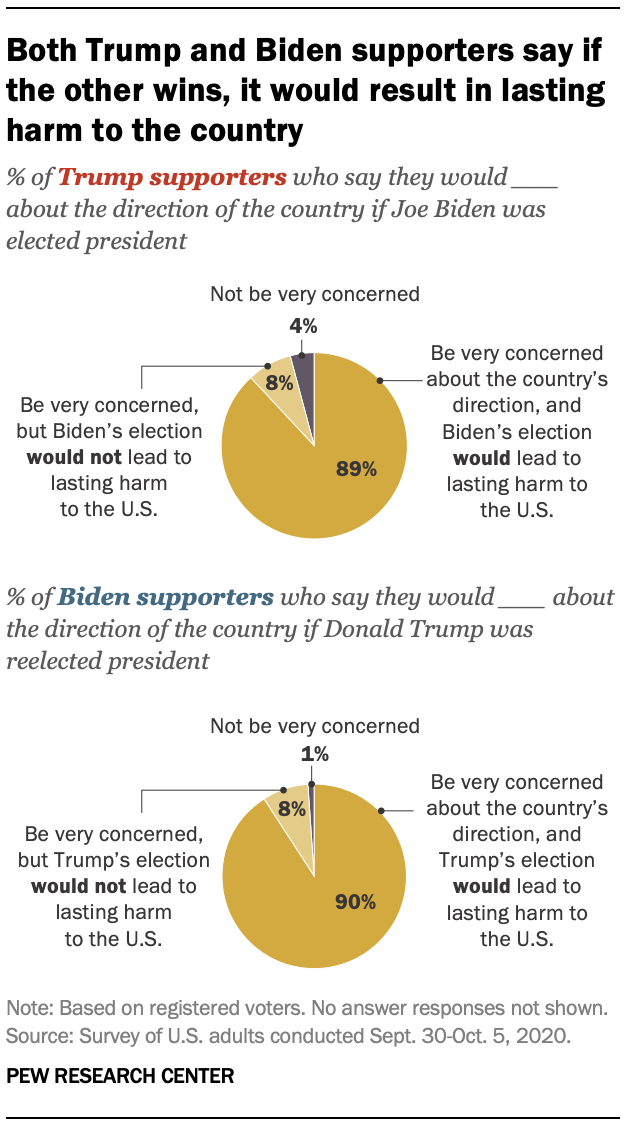
The studies we’ve conducted at Pew Research Center over the past few years illustrate the increasingly stark disagreement between Democrats and Republicans on the economy, racial justice, climate change, law enforcement, international engagement and a long list of other issues. The 2020 presidential election further highlighted these deep-seated divides. Supporters of Biden and Donald Trump believe the differences between them are about more than just politics and policies. A month before the election, roughly eight-in-ten registered voters in both camps said their differences with the other side were about core American values, and roughly nine-in-ten – again in both camps – worried that a victory by the other would lead to “lasting harm” to the United States.
The U.S. is hardly the only country wrestling with deepening political fissures. Brexit has polarized British politics, the rise of populist parties has disrupted party systems across Europe, and cultural conflict and economic anxieties have intensified old cleavages and created new ones in many advanced democracies. America and other advanced economies face many common strains over how opportunity is distributed in a global economy and how our culture adapts to growing diversity in an interconnected world.
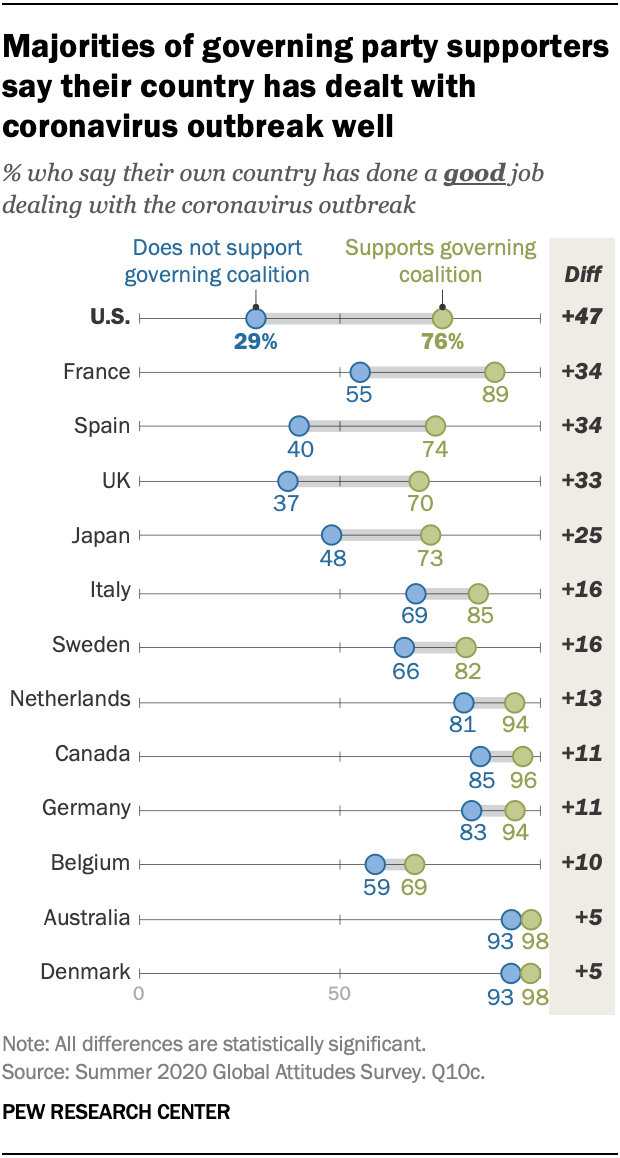
But the 2020 pandemic has revealed how pervasive the divide in American politics is relative to other nations. Over the summer, 76% of Republicans (including independents who lean to the party) felt the U.S. had done a good job dealing with the coronavirus outbreak, compared with just 29% of those who do not identify with the Republican Party. This 47 percentage point gap was the largest gap found between those who support the governing party and those who do not across 14 nations surveyed. Moreover, 77% of Americans said the country was now more divided than before the outbreak, as compared with a median of 47% in the 13 other nations surveyed.
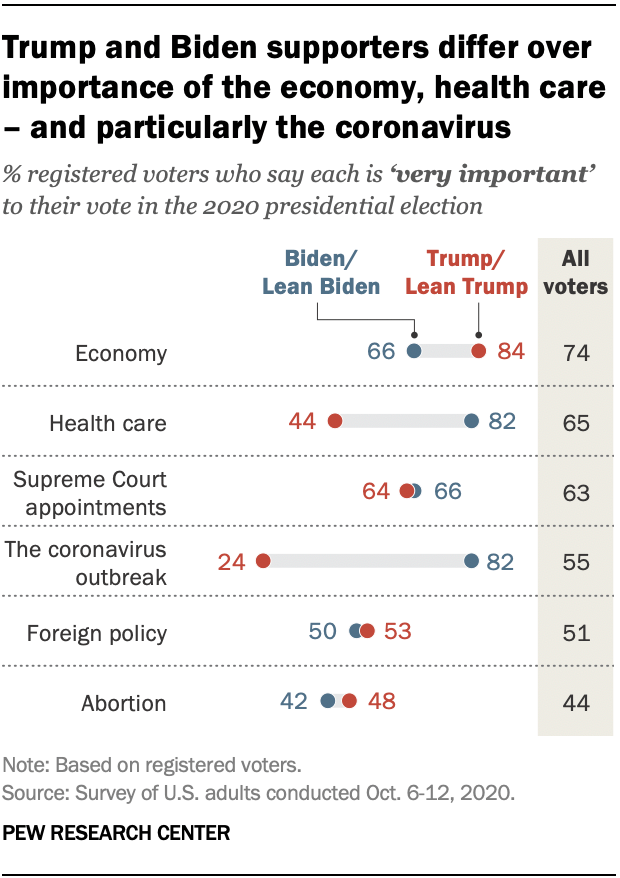
Much of this American exceptionalism preceded the coronavirus: In a Pew Research Center study conducted before the pandemic, Americans were more ideologically divided than any of the 19 other publics surveyed when asked how much trust they have in scientists and whether scientists make decisions solely based on facts. These fissures have pervaded nearly every aspect of the public and policy response to the crisis over the course of the year. Democrats and Republicans differ over mask wearing, contact tracing, how well public health officials are dealing with the crisis, whether to get a vaccine once one is available, and whether life will remain changed in a major way after the pandemic. For Biden supporters, the coronavirus outbreak was a central issue in the election – in an October poll, 82% said it was very important to their vote. Among Trump supporters, it was easily the least significant among six issues tested on the survey: Just 24% said it was very important.
Why is America cleaved in this way? Once again, looking across other nations gives us some indication. The polarizing pressures of partisan media, social media, and even deeply rooted cultural, historical and regional divides are hardly unique to America. By comparison, America’s relatively rigid, two-party electoral system stands apart by collapsing a wide range of legitimate social and political debates into a singular battle line that can make our differences appear even larger than they may actually be. And when the balance of support for these political parties is close enough for either to gain near-term electoral advantage – as it has in the U.S. for more than a quarter century – the competition becomes cutthroat and politics begins to feel zero-sum, where one side’s gain is inherently the other’s loss. Finding common cause – even to fight a common enemy in the public health and economic threat posed by the coronavirus – has eluded us.
Over time, these battles result in nearly all societal tensions becoming consolidated into two competing camps. As Ezra Klein and other writers have noted, divisions between the two parties have intensified over time as various types of identities have become “stacked” on top of people’s partisan identities. Race, religion and ideology now align with partisan identity in ways that they often didn’t in eras when the two parties were relatively heterogenous coalitions. In their study of polarization across nations, Thomas Carothers and Andrew O’Donohue argue that polarization runs particularly deep in the U.S. in part because American polarization is “especially multifaceted.” According to Carothers and O’Donohue, a “powerful alignment of ideology, race, and religion renders America’s divisions unusually encompassing and profound. It is hard to find another example of polarization in the world,” they write, “that fuses all three major types of identity divisions in a similar way.”
Of course, there’s nothing wrong with disagreement in politics, and before we get nostalgic for a less polarized past it’s important to remember that eras of relatively muted partisan conflict, such as the late 1950s, were also characterized by structural injustice that kept many voices – particularly those of non-White Americans – out of the political arena. Similarly, previous eras of deep division, such as the late 1960s, were far less partisan but hardly less violent or destabilizing. Overall, it’s not at all clear that Americans are further apart from each other than we’ve been in the past, or even that we are more ideologically or affectively divided – that is, exhibiting hostility to those of the other party – than citizens of other democracies. What’s unique about this moment – and particularly acute in America – is that these divisions have collapsed onto a singular axis where we find no toehold for common cause or collective national identity.
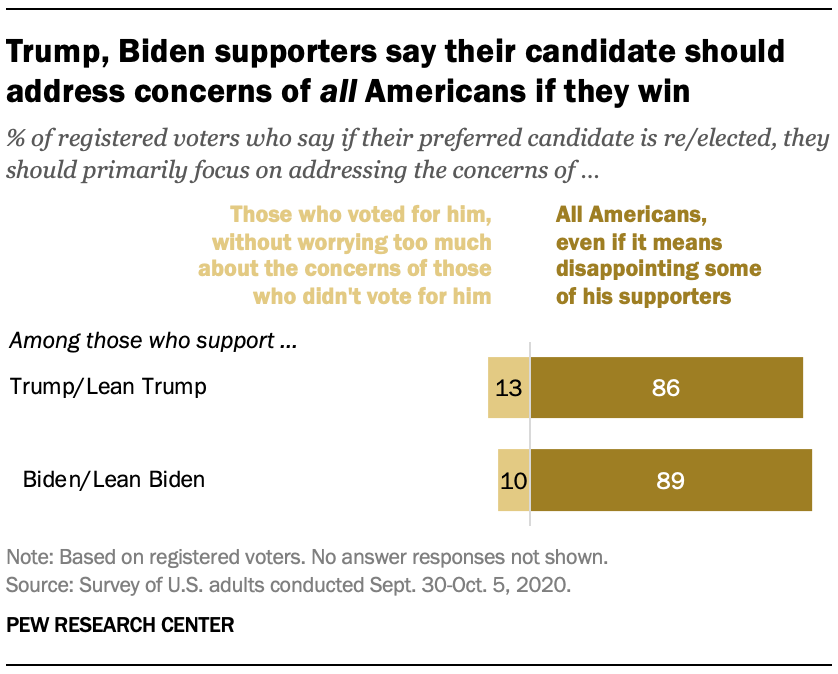
Americans both see this problem and want to address it. Overwhelming majorities of both Trump (86%) and Biden (89%) supporters surveyed this fall said that their preferred candidate, if elected, should focus on addressing the needs of all Americans, “even if it means disappointing some of his supporters.”
In his speech, President-elect Biden vowed to “work as hard for those who didn’t vote for me as those who did” and called on “this grim era of demonization in America” to come to an end. That’s a sentiment that resonates with Americans on both sides of the fence. But good intentions on the part of our leaders and ourselves face serious headwinds in a political system that reinforces a two-party political battleground at nearly every level.

